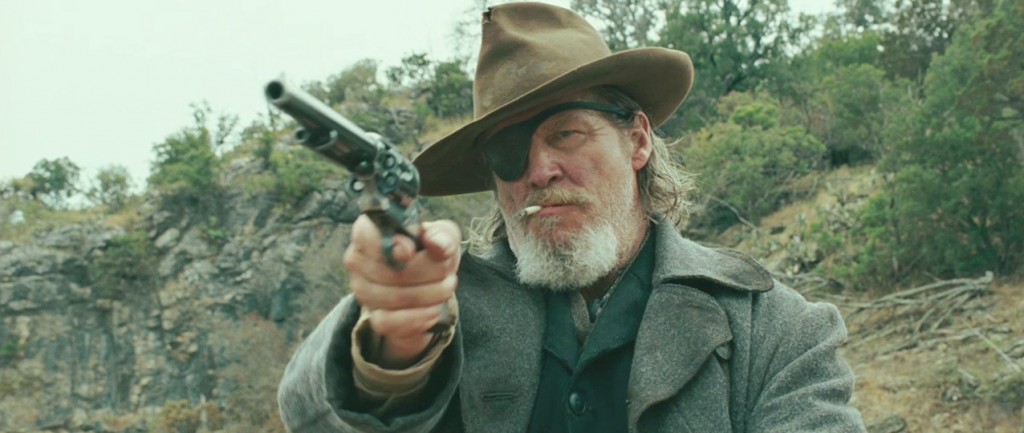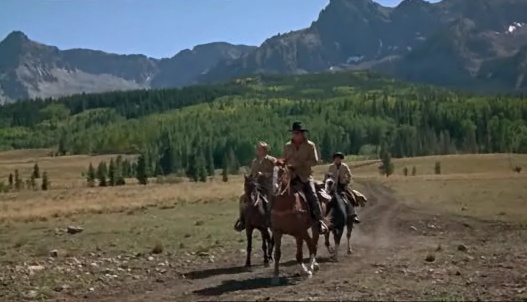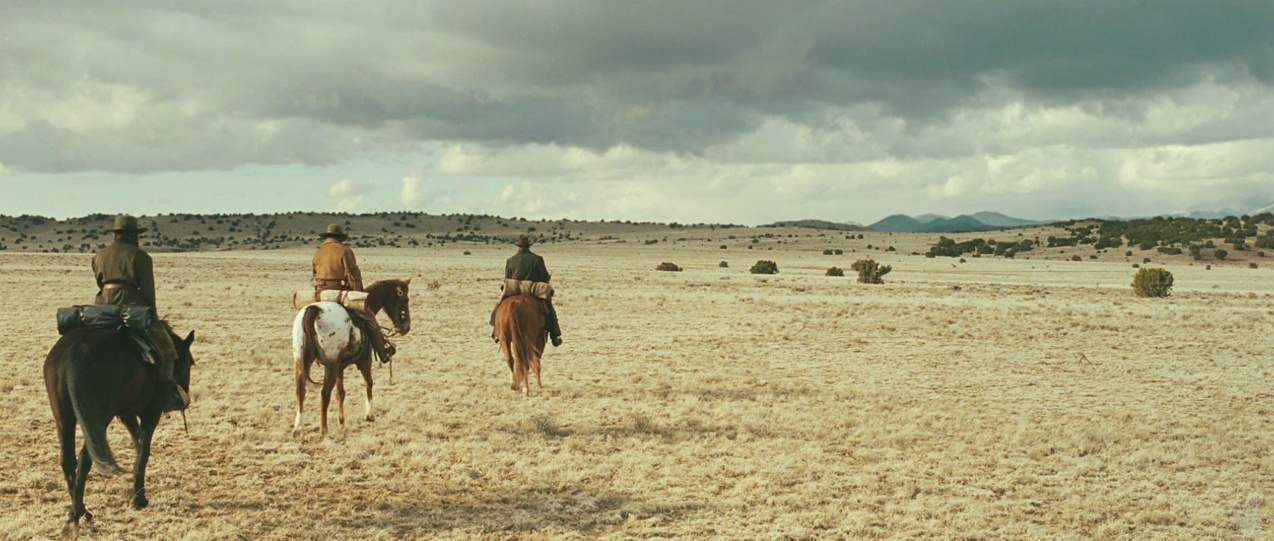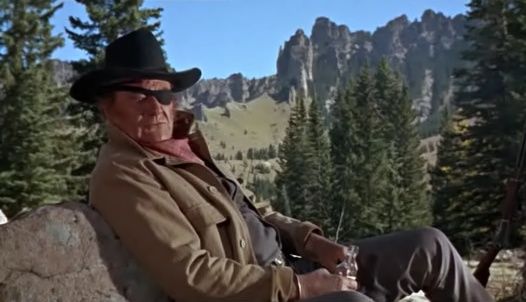True Grit (Joel & Ethan Coen, 2010) and
True Grit (Henry Hathaway, 1969)
We hear a lot of griping about Hollywood remakes, usually in the context of telling us how creatively bankrupt the industry is. Well, perhaps – perhaps – there’s some truth in that. But we can also look on remakes as a way of measuring the progress of basic storytelling craft in Hollywood, by seeing how the same material is treated differently over time. And so it is with the western True Grit, Joel and Ethan Coen’s adaptation of Charles Portis’ novel, which had previously been filmed in 1969 by Henry Hathaway.
Such an exercise is never scientific, of course. Hathaway was an experienced old-hand, in his early seventies, towards the end of a long career that stretched back to the silent era. While a distinguished studio veteran, he wasn’t a figure of the calibre of John Ford or Howard Hawks; he was never held in the same esteem as the Coen brothers are today. In other respects, though, the talent in the films can be seen as comparable. Hathaway’s film was still a prestige production, and in John Wayne it features the kind of old-fashioned star power that the post-classical era Hollywood can’t really build any more. It is also interesting for its pairing of Wayne with a couple of notable figures from the then-emerging generation of New Hollywood actors, with Dennis Hopper and Robert Duvall in small-ish but important supporting parts. Against that, the Coens have Jeff Bridges in the Wayne role, Matt Damon in the big supporting part (played by musician Glen Campbell in Hathaway’s film), and a comparable stock of interesting supporting players as villains (most notably Josh Brolin and Barry Pepper).
Both films centre on the character of Mattie (played by Kim Darby in the 1969 version and Hailee Steinfeld in the 2010 film), a strong-willed fourteen year old girl whose father has been killed by the villainous Tom Chaney. Sent into town to settle her father’s affairs, she seeks out the aging and cantankerous Deputy U.S. Marshall “Rooster” Cogburn (Wayne / Bridges) to hunt down Chaney, who has fled into the wild and joined up with a gang of other criminals. Joining them on the hunt is Texas Ranger Le Beouf (Campbell / Damon), who is seeking Chaney for previous crimes committed in Texas.
It’s an archetypal plot, and both films are welcomely traditional westerns: even in the latter film the Coens are uninterested in postmodern self-consciousness. Hathaway, in particular, shoots his film in a no-nonsense manner, apparently indifferent to the revolution in the genre that Sergio Leone had initiated with his Dollars films and Once Upon a Time in the West, all of which arrived in the United States in 1967 and 1968 (for a sense of how old-fashioned Hathaway’s True Grit was even at the time, consider that Sam Peckinpah’s The Wild Bunch was released only a month later). That’s not necessarily a bad thing, and the more traditional approach is apt for a movie centring on the aging Cogburn, himself a relic of an earlier phase of western law. Hathaway’s True Grit is elegiac in its celebration of Cogburn’s free spirit, and the film is stubbornly old-fashioned in its depiction of an outdoorsy adventure in a conventionally pretty west (it is set in Arkansas and Oklahoma and was shot in Colorado).
The Coens takes the same basic details and the classical structure but give the story more weight: we care more about Mattie, making it more of a story of justice and retribution than Hathaway’s film. The film is beautifully shot by cinematographer Roger Deakins, but it is a stark beauty, found in less spectacular locations than Hathaway used. The film looks slicker, as one would expect comparing a 1969 film to one from 2010, but this goes beyond merely the production values. The Coen brothers are simply more assured and instinctive storytellers than Hathaway. Small decisions are instructive, as with their decision to omit the depiction murder of Mattie’s father at the start of the film. This lends the figure of Chaney more mystery, and means the quest takes on its meaning purely through the force of Mattie’s devotion to it. The Coens also show a better instinct for the story’s humorous moments, wringing more laughs from scenes that are, on paper, almost identical to their predecessors from the 1969 film.
The most dramatic leap forward from 1969 to 2010 is in the depiction of Mattie. Perhaps this is a social advance, rather than progression in filmmaking, but the Coens’ Mattie is far more sympathetic than Hathaway’s. Kim Darby is reasonable enough in the role, but the 1969 Mattie is presented as a carping and unsympathetic tomboy. In the Coens’ film, however, Hailee Steinfeld’s spirited performance gets us firmly on Mattie’s side. The Coens’ more realistic depiction of the west helps on this front, since it places Mattie in a more adult frontier environment than Hathaway’s genteel and picturesque west. In the 1969 version we often side with those Mattie harangues, but in the Coens’ film it is fun watching her get the best of the many inhabitants of this world who underestimate her.
The other key figure in both films is Cogburn, and here we see the progress of screen acting since 1969. Wayne won a Best Actor Oscar for the role, but it’s hard to envisage him doing so today. Even allowing for the fact that this was effectively a de facto lifetime achievement award, a habit the Academy has not broken, it is difficult to imagine his performance passing muster in a film made today. Wayne’s ultra-macho, eight-testicle screen persona was always larger-than-life, and nobody would question his screen presence here or elsewhere, but in contrast to a film such as The Searchers there’s little here to suggest his range as an actor. The variations on his more typical strong man characters come from the script’s references to his age and weight, and various incidents (he gets drunk and falls of his horse), rather than from Wayne himself.
Instead of a screen legend, the Coens have opted for Jeff Bridges in the Cogburn role. Bridges, once a likable B-list leading man, is now firmly into the respected character actor phase of his career – which the Coens helped kick off back with The Big Lebowski – and amply compensates for Wayne’s star power with genuine talent. He is more convincingly disreputable, which makes his emergence as an effective ally for Mattie more interesting and satisfying. Bridges plays the role broadly, but the Coens have always been masters at successfully integrating colourful performances without letting them slip over the top: the key, I think, is their ear for language and knack for getting all the actors on a similar wavelength. Bridges’ Cogburn is a wonderful, grizzly creation, and the performance is at a completely different level to Wayne in terms of screen acting.
The other crucial role is Le Beouf, who provides a welcome extra level of complication to the interactions between Mattie and Cogburn by providing a rival figure for Mattie to turn to. Glen Campbell’s performance in the 1969 version sets the template of a lawman who seems just a little too assured: his country singer’s swagger is well suited to the role. Matt Damon builds on that precedent and gives a nuanced and funny performance that avoids simple answers about Le Beouf’s integrity and character. He is aided by the Coens’ script, which creates more ebbs and flows in the conflict between Cogburn and Le Beouf and thus gives Damon more to do.
The Coens are amongst our finest screen storytellers, and their True Grit is a solid story exceptionally well told. The earlier film, by contrast, is the work of a reliable studio veteran doing a professional job. I wouldn’t want to go too far, therefore, in claiming True Grit as evidence for my previously argued suggestion that the overall quality of filmmaking tends to get better and better. It is, however, a good reminder of another principle relevant to complaints of Hollywood’s derivativeness: originality is a lousy criterion for evaluation of artistic works. If Hollywood is remaking its old properties, and doing this good a job of it, then bring the remakes on.



